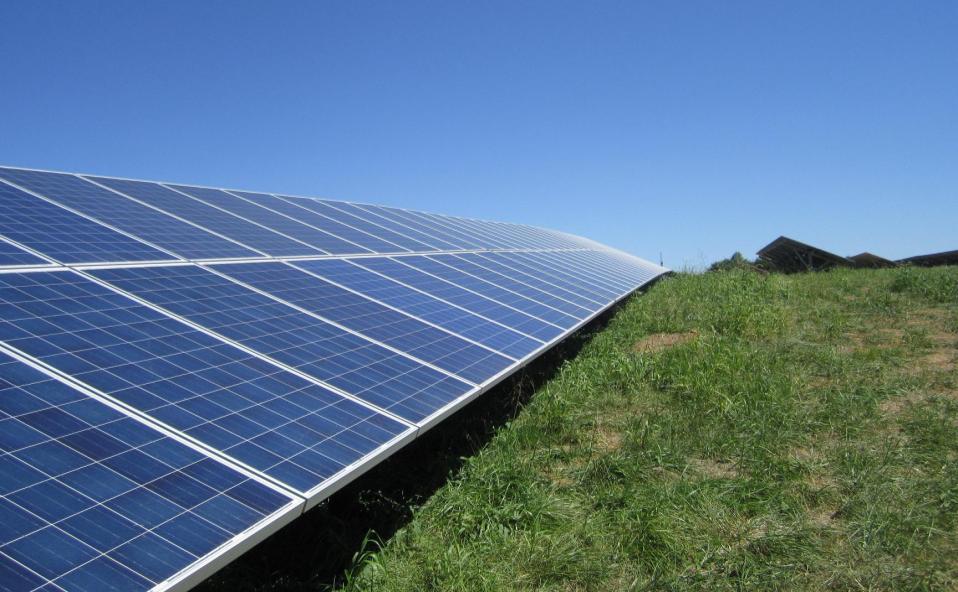Maryland’s farming lands, especially those on the Eastern Shore, are a crucially important food-producing asset of our State. Unfortunately, those rural lands and associated small-town economies are in the crosshairs of a giant land grab by the solar industry. The industry has weaponized ‘climate change’ as a low-cost way to capture tens of thousands of acres of Maryland’s food production capacity. Do we really have to let that happen?
Right now, the solar industry has Maryland policymakers by the tail. Masquerading as public utilities (which they aren’t), solar companies are ruthlessly trying to take advantage of Governor Moore’s goal of getting Maryland to 100% renewable by 2035. While the Governor’s clean energy goals are necessary in this age of rapid climate change, solar company representatives are forcing outrageous policy objectives concerning the siting of solar projects – putting them on Maryland’s croplands and open space. As a consequence, urban policymakers – most of whom know nothing about agro-economics – are making hasty, uninformed decisions that will irreversibly harm Maryland’s rural communities. Cheerleading on climate change at the expense of Maryland’s agricultural sector is short-sighted and irresponsible, especially when future food production becomes increasingly important on an ever-growing planet.
Nestled in the heart of the mid-Atlantic’s major markets, Maryland’s vibrant agricultural sector accounts for $8 billion in annual revenues, $20 billion in value-added products, and a whopping 350,000 ag-connected jobs across Maryland’s 23 Counties. Displacing crop-producing farmlands with solar panels – even incrementally – has the potential to irreversibly upend Maryland agriculture and the ancillary businesses it supports, devastating small communities on the Eastern Shore and in Southern and Western Maryland.
While solar projects are crucial in reaching Governor Moore’s clean energy goals, they should not come at the expense of Maryland’s productive agricultural sector. There are many other recognized options for solar arrays like parking lots, airports, brownfields, rooftops, industrial sites, and water bodies. But the solar companies don’t want that – they want carte blanch access to cheaper farmland and the ability to bypass all local zoning in their aggressive pursuit of larger profits. We should not allow that.
Right now, solar siting policies in Maryland are a chaotic mess in desperate need of leadership from the Governor’s office. The Maryland Energy Administration and certain state senators and delegates aren’t listening to the concerns of Maryland’s counties, and they’re not understanding how this “rush to renewables” will impact Maryland’s rural communities. Governor Moore needs to tap the brakes so that no one is left behind. Obviously, Maryland’s agricultural leaders should have a seat at the table when it comes to solar siting policies on agricultural lands – right now, they don’t.
Likewise, the Maryland Department of Planning needs to have a much greater role – similar to Comprehensive Planning – in determining where solar growth areas will be reasonably situated to prevent bait-and-switch scenarios coming from the industry. None of that has been determined, and solar companies are running the show.
While solar energy should be a priority in Maryland, it should not come at the expense of farmland. Farmland and open space should be very last on the priority list of where solar panels should go.
Jay Falstad is the Executive Director of the Queen Anne’s Conservation Association



Roland Stephen says
No one is being “forced”. Farmers and other landowners have a great opportunity to increase their income while increasing sources of zero-carbon energy. These facilities co-exist with livestock, they are carefully screened by trees and vegetation, and may even allow for greater diversity in wildlife as opposed to the monocultures of corn and soy.
Jay Falstad says
I recommend that you carefully read HB-1407, and then imagine a Waste-to-energy plant on a farm next to where you live. The renewable energy effort conveniently shields itself behind “solar”, when in fact, there are other far worse options being contemplated. I just pray all those landowners who’ve signed lease options have read the fine print of those contracts.
Alexander Gilchrist says
There is a growing industry called agrivoltaics in which farmers and ranchers strategically place solar arrays on their land. Importantly, the panels are high enough off the ground that shade loving crops and grasses can grow underneath. It has gained legislative traction in Colorado, for example. A well-publicized operation is called Jack’s Solar Garden. This shouldn’t be an either/or situation.
Isaac Rutherford says
Respectfully, why is row crop monoculture with all the attendant pesticide and fertilizer application better than solar panels? And shouldn’t zoning laws allow a landowner to choose to harvest sunlight instead of corn? It’s hard not to conclude that resistance to solar development is driven by thinly veiled NIMBYism.
Rob Davis says
NIMBY is people who don’t want to look at solar panels. Jay’s point is that the rug is being pulled out from underneath the farmers who produce food for everyone in the northeast US.